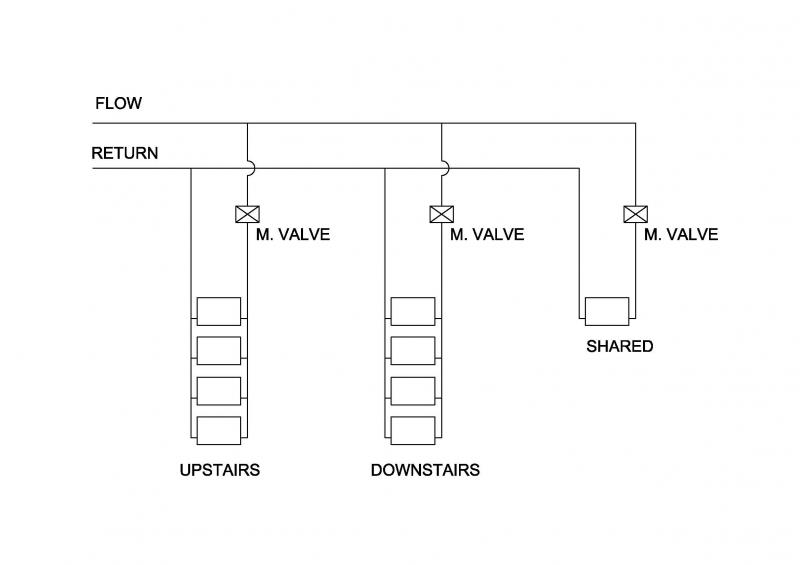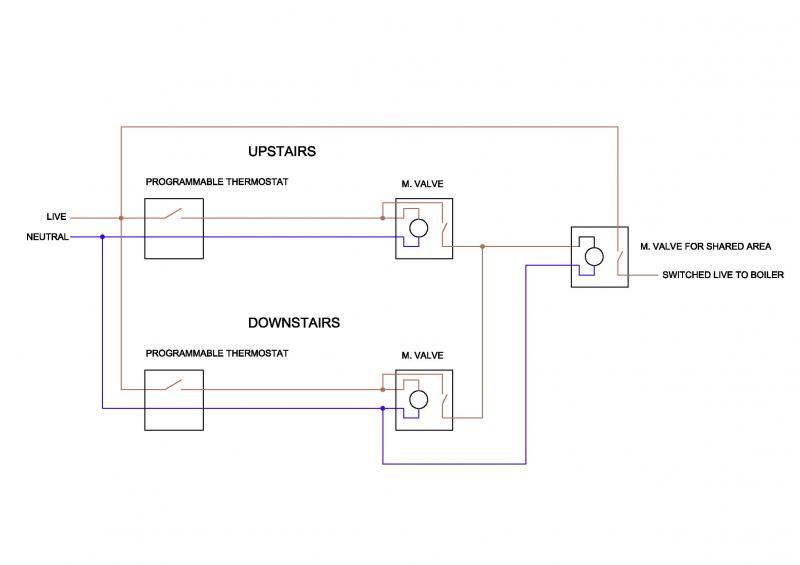I am about to undertake an installation of radiator central heating into an existing house which is two levels. As part of the install I am going to have 5 zones (controlled via zone valves) as the house is quite large and a large part isn't used during the day and will be closed off and not heated
Part of the design I wish to have a radiator located near the bottom of the stairwell that is linked to two separate zones. The reason behind this is when the upstairs zone is on I want the radiator at the bottom of the stairs on to warm any air coming in from an external door, that might go upstairs. However I also need that radiator on when the zone for the down stairs part of the house is active as my wife works downstairs.
Any ideas or help would be great. Central heating isn't very common down here in NZ?
Thanks
Mike
Part of the design I wish to have a radiator located near the bottom of the stairwell that is linked to two separate zones. The reason behind this is when the upstairs zone is on I want the radiator at the bottom of the stairs on to warm any air coming in from an external door, that might go upstairs. However I also need that radiator on when the zone for the down stairs part of the house is active as my wife works downstairs.
Any ideas or help would be great. Central heating isn't very common down here in NZ?
Thanks
Mike



